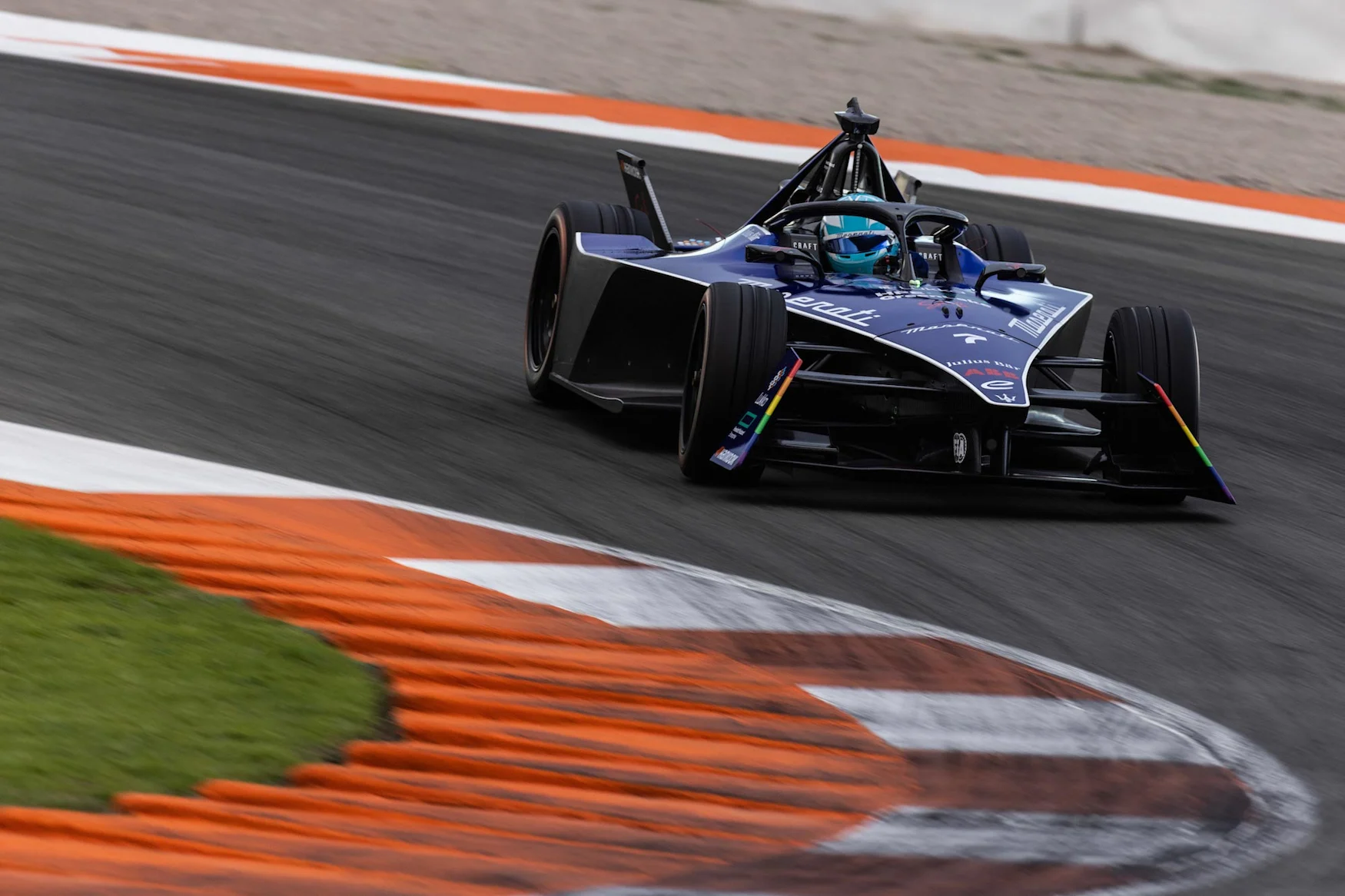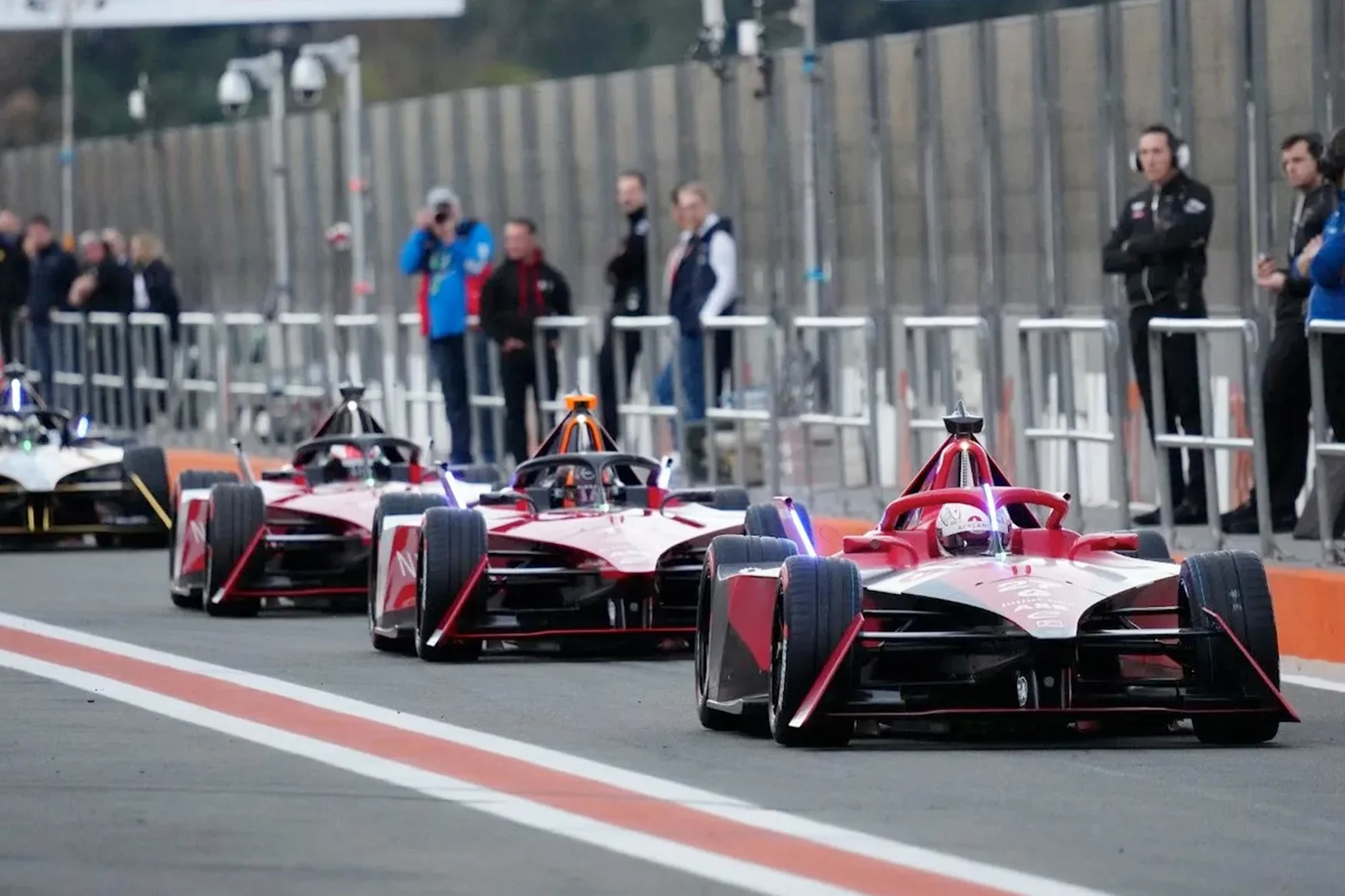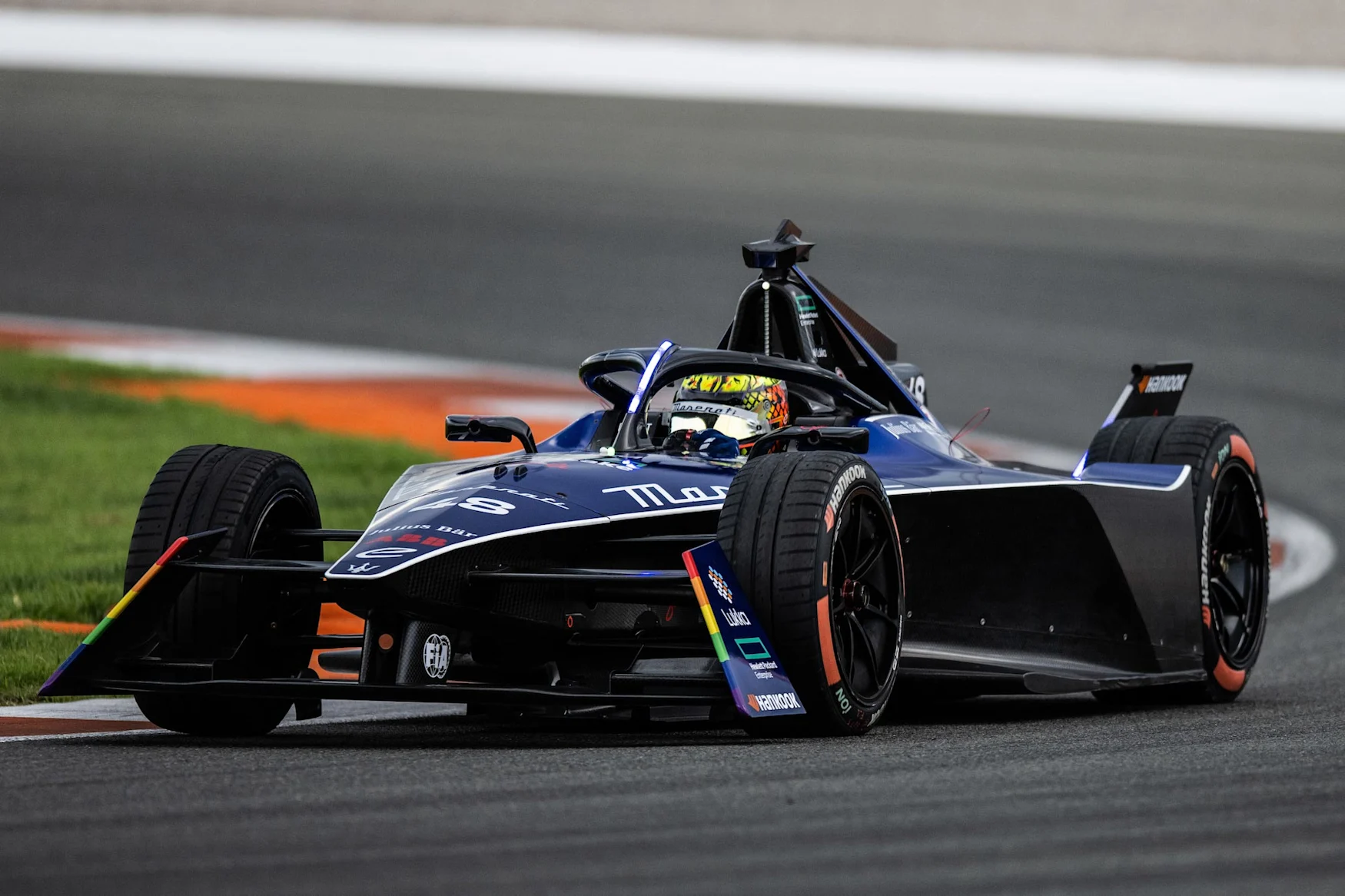The first in-depth testing for Formula E’s Gen3 car took place this week in Valencia, just one month away from the start of Season 9 in Mexico City. Across three full days, one simulated race and an added one-hour jaunt on a planned media day, some teams ran nearly 600 laps and over 2,000 kilometers to get a handle on what the new cars are capable of. The week wasn’t without incidents, of course, but Formula E co-founder and chief championship officer Alberto Longo said the sessions were “very successful.”
“The teams and drivers are obviously still learning and integrating the new system,” Longo explained. “We know that [going] from Gen2 to Gen3 is much harder to navigate than from Gen 1 to Gen 2, so it’s great to see that we are already much quicker than where we were with Gen2.”
After this week’s testing in Spain, here are the biggest things we learned about Formula E’s pending Gen3 debut next month.
The Gen3 cars look great on track
I’ll be the first to admit that when Formula E pulled the wraps off the Gen3 car in Monaco last April, I was a bit skeptical of the new, bold look. Once the teams started revealing their final liveries in the lead up to the Valencia test, I started to see the potential. All of the teams have been posting clips this week and Formula E has compiled footage as well, showing that the new cars do indeed look great on track despite their fighter jet-esque design.
The Gen3 car isn’t that much faster than Gen2 yet
When the Gen3 car was first revealed one of the main points Formula E hyped up was how much faster the new trim would be. That included a top speed of up to 200MPH. Of course, speed is dependent on a number of factors, including the circuit, but on paper the new cars should be much quicker than the Gen2 EVs. In the first practice session of the week, Maserati MSG Racing’s Maximilian Günther posted the quickest official time of 1:26.096, slower than the fastest lap of Valencia testing last year in the Gen2 car of 1:25.763. The quickest lap this week came when Günther notched a 1:25.127 on the final day.
“When developing a new car, it’s really important to collect as much data as possible and to get a good feel for the car, and I believe that we have achieved this over the past few days,” Günther said. “Now, we just need to refine some aspects of our performance and continue with our preparations ahead of the first race of the season in Mexico.”

Maserati MSG Racing
With the Gen3 cars being lighter and more powerful, an added 100kW to be exact, you’d expect the lap times to fall from the previous generation running. However, with limited testing, specifically in regards to the new tires, teams haven’t dialed-in their setups to take full advantage of the new cars just yet. Hankook told The Race that some drivers experienced the new compound “for the first time in their life” during the initial session in Valencia.
The new tires are posing a challenge
For the first eight seasons, Formula E ran Michelin tires. Starting with Season 9, however, the series is making the switch to Hankook. More specifically, it moved to a more sustainable compound that aligns with Formula E’s green initiatives. 30 percent of the new tires are made from environmentally-friendlier materials like natural rubber. The challenge for Hankook is not only does the tire have to be better for the Earth, it also has to work well in both wet and dry conditions since Formula E only runs one compound.
Autosport reports that Hankook tested “maybe even 80 different specs” of tire compounds during the development phase, according to the company’s head of motorsport Manfred Sandbichler. The end result is a tire where the inside is softer and the outside is harder – a combination that could have implications for how teams tackle corners at each circuit.
One thing that’s clear throughout the paddock is that the new Hankook tires are more durable than the final spec of Michelins. McLaren Racing’s Jake Hughes told Engadget recently that the new tires “behave very differently” and that they’re “a bit harder, a bit stiffer.” The harder tire should be more durable than what Formula E ran in the past, according to Hughes, as the degradation on the Michlins would lead to the treaded tire being nearly slick by the end of the race.
“We need to try to understand how we can maximize it,” he explained. “At some point we’re talking in miniscule details to try to find an advantage over the competition.”
Teams are dealing with reliability concerns

Formula E
With limited testing ahead of the official preseason sessions in Valencia, teams are finding issues with their cars. The Race reports that some teams were in such a crunch to make it to Spain that they didn’t have time to shakedown their cars beforehand to make sure the basic systems were functioning properly due to parts that arrived late. According to that report, around-the-clock work shifts were required for some to make it to testing.
During a mock race this week, eight of 22 cars retired before the end of the trial event. One car didn’t make the start due to battery issues and two others had to pit on the first lap. A handful of others had to visit pitlane, which doesn’t happen during a Formula E race unless you have an issue (until the series institutes charging stops at least). The two biggest problems seem to be with the Williams Advanced Engineering battery setups and the brakes, both of which The Race reported teams were having issues with in early November. Formula E is said to be working on a secondary braking system after a number crashes in testing prior to Valencia, but The Race understands that it won’t be available during the first two E-Prix in Mexico City and Diriyah.
Teams expect Gen3 cars to improve quickly and drastically

Maserati MSG Racing
This isn’t exactly a new development, but teams up and down the paddock echoed the sentiment after the handful of test runs. McLaren’s team principal Ian James told Engadget that he expects “a development rather than a complete evolution.”
“As much as we’ll prepare the best we can for Mexico and that first race, undoubtedly there’s going to be a very steep learning curve as we get into the new season,” he explained. “And a fast rate of development as well.”
Drivers are also clear there’s “a lot to learn and plenty of work to do” before the first race, as Maserati’s Edoardo Mortara explained. “This week of testing has been intense but overall positive, and although we’re still understanding the finer points of the Gen3, I think we are in a strong position,” he said. “From here, we will fully analyze our data, debrief and continue to gather simulations from HQ.”
The first race in Mexico City could be… interesting
The issues with batteries and brakes aside, there are a number of elements of a proper Formula E E-Prix that could make the first full race quite an adventure. The new tires pose a challenge on a full street circuit, as opposed to the smooth track in Valencia. Getting the rubber in the proper window for qualifying and managing any degradation over the course of the race will be key.
There are also some unknowns with race format as well, as Formula E plans to test a mandatory Attack Charge stop in certain races in Season 9. Attack Charge will give drivers a temporary power boost much like Attack Mode has in previous seasons. Formula E says the 30-second stop can deliver 4kWh of energy to power an “enhanced” Attack Mode where the power of the Gen3 cars increases from 300kW to 350kW. It’s unclear where the Attack Charge trials will take place as specific races weren’t announced when the updated sporting regulations were revealed last month.
All products recommended by Engadget are selected by our editorial team, independent of our parent company. Some of our stories include affiliate links. If you buy something through one of these links, we may earn an affiliate commission. All prices are correct at the time of publishing.